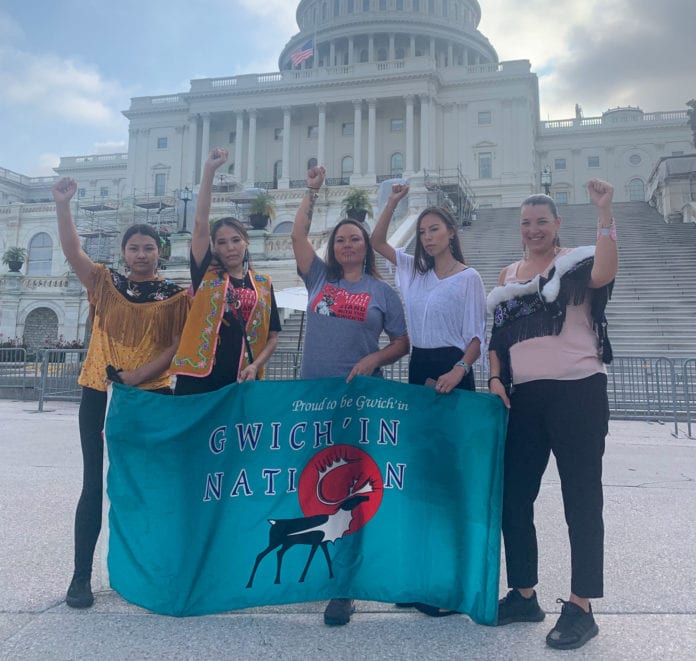
Release of the final environmental impact statement for oil and gas development in the Arctic National Wildlife Refuge is garnering kudos from Alaska’s congressional delegation and protests from Neets’ąįį Gwich’in tribes who rely ANWR’s subsistence and cultural resources.
Senators Lisa Murkowski and Dan Sullivan, with Rep. Don Young, all R-Alaska, have welcomed the final EIS as a key step forward for oil and gas exploration leasing on 1002 Area, which they describe as the non-wilderness coastal plain of ANWR.
“This is a major step forward in our decades-long efforts to allow for responsible resource development in Alaska’s 1002 Area,” Murkowski said, in a statement issued by the delegation. “I’m hopeful we can now move to a lease sale in the very near future, just as Congress intended so that we can continue to strengthen our economy, our energy security and our long-term prosperity.”
“Another critical step in the process to unleash Alaska’s energy and economic potential,” was Sullivan’s reaction to the final EIS.
“…the culmination of decades of work,” Young said. “I have fought for responsible oil and gas exploration on the coastal plain since ANWR was created, and I am immensely pleased that we have reached this stage.”
The delegation specifically thanked Interior Secretary David Bernhardt, an oil industry lobbyist from Colorado, for his efforts for moving the refuge closer to oil and gas development.
The Gwich’in tribes meanwhile criticized the final EIS as flawed and called on Congress to protect the Arctic Refuge from a document they said “brushes aside the subsistence and cultural resources of the tribes.
“The EIS boldly declares that oil and gas development in the caribou calving grounds will have no impact at all on the tribe’s subsistence hunting practices,” they said in a statement.
“The coastal plain is one of the most important natural, cultural and subsistence resources to the Neets’ąįį Gwich’in of Arctic Village and Venetie and to the Gwich’in people as a whole,” said Margorie Gemmill, first chief of the Native Village of Venetie Tribal Government. “The cultural identity of the Gwich’in people as caribou people is intertwined with the Porcupine caribou herd’s calving areas in the coastal plain. Any impacts to the Porcupine caribou herd from changes in migration patterns, lower fertility rates, and loss of habitat will have significant adverse social, cultural, spiritual and subsistence impacts on our people. This process must be stopped.”
The Arctic Refuge Protection Act introduced in the Senate on Sept. 11 would permanently protect the Coastal plain from drilling. The measure, introduced by Senators Michael Bennet, D-Colorado; Maria Cantwell, D-Washington; Tom Carper, D-Delaware; Ed Mackey, D-Massachusetts; Chuck Schumer, D-New York, and Tom Udall, D-New Mexico, would establish the coastal plain as a wilderness area.
“The Gwich’in Nation will continue to stand in solidarity to protect the calving grounds from any disturbances or destruction,” said Bernadette Demientieff, executive director of the Gwich’in Steering Committee.
The final EIS is online here.
Additional information from the Bureau of Land Management is here.





